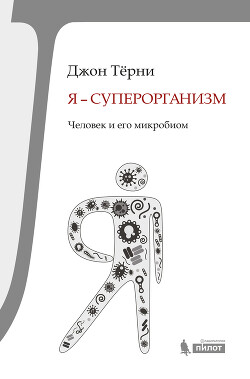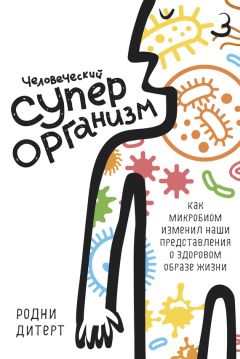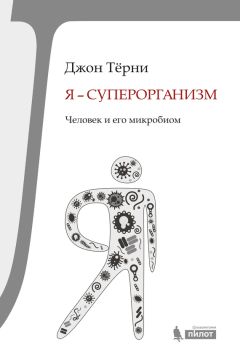Bakalar, Nicholas (2003). Where the Germs Are: A Scientific Safari. John Wiley.
Barr, Jeremy, et al (2013). Bacteriophage adhering to mucus provide a non-host-derived immunity. Proceedings of the National Academy of Sciences. 110: 10771–10776.
Belkaid, Yasmine, and Timothy Ward (2014). Role of the Microbiota in Immunity and Inflammation. Cell, 157: 121–141.
Bercik, P., et al (2011). The intestinal microbiota affect central levels of brain-derived neurotropic factor and behavior in mice. Gastroenterology, 141:599–609.
Bested, Alison, et al (2013). Intestinal microbiota, probiotics and mental health: from Metchnikoff to modern advances. Part 1 – autointoxication revisited. Gut Pathogens, 5: 5.
Bianconi, Eva, et al (2013). An estimation of the number of cells in the human body. Annals of Human Biology, 40: 463–471.
Bjarnadottir, T. K. et al (2006). Comprehensive repertoire and phylogenetic analysis of the G protein-coupled receptors in human and mouse. Genomics, 88: 263–73.
Blaser, Martin (2014). Missing Microbes: How Killing Bacteria Creates Modern Plagues. Oneworld.
Bollinger, R. R., et al (2007). Biofilms in the large bowel suggest an apparent function of the human vermiform appendix. Journal of Theoretical Biology. 249: 826–831.
Borre, Yuliya, et al (2014). Microbiota and neurodevelopmental windows: implications for brain disorders. Trends in Molecular Medicine, XX, 1–10.
Bosch, Thomas (2012). What Hydra has to say about the role and origin of symbiotic interactions. Biological Bulletin, 223: 78–84.
Bosch, Thomas (2013). Cnidarian – Microbe Interactions and the Origin of Innate Immunity in Metazoans. Annual Review of Microbiology, 67: 499–518.
Brandl, K., et al (2008). Vancomycin-resistant enterococci exploit antibiotic-induced immune deficits. Nature, 455: 804–7.
Brodie, Eoin, et al (2007). Urban aerosols harbor diverse and dynamic bacterial populations. Proceedings of the National Academy of Sciences, 104:299–304.
Callewaert, Chris, et al (2014). Deodorants and antiperspirants affect the axillary bacterial community. Archives of Dermatological Research, 1007/s00403–014–1487–1.
Can, Ismail, et al (2014). Distinctive thanatomicrobiome signatures found in the blood and internal organs of humans. Journal of Microbiological Methods, 106:1–7.
Cao, Xinyi, et al (2013). Characteristics of the gastrointestinal microbiome in children with autism spectrum disorder: a systematic review. Shanghai Archives of Psychiatry. 25: 342–353.
Ciorba, Matthew (2012). A Gastroenterologists’s Guide to Probiotics. Clinical Gastroenterology and Hepatology, 10:960–968.
Claesson, M., et al (2012). Gut microbiota composition correlates with diet and health in the elderly. Nature, 488: 178–84.
Clemente, Jose, et al (2012). The Impact of the Gut Microbiota on Human Health: An Integrative View. Cell, 148, March.
Collins, Stephen (2012). The interplay between the intestinal microbiota and the brain. Nature Reviews Microbiology. 10: 735–742.
Colson, P., et al (2010). Pepper mild mottle virus, a plant virus associated with specific immune responses, fever, abdominal pains, and pruritus in humans. PLoS One, 2010;5:e10041.
Colson, P., et al (2013). Evidence of the megavirome in humans. Journal of Clinical Virology, 57: 191–200.
Conrad, Peter (1999). A mirage of genes. Sociology of Health and Illness, 21, 228–241.
Courage, Katherine (2014). Why Is Dark Chocolate Good for You? Thank Your Microbiome. ScientificAmerican.com March 19.
Cox, Laura, and Martin Blaser (2013). Pathways in Microbe-Induced Obesity. Cell Metabolism, 17: 883–894.
Cressey, Dan (2014). Microbiome science threatened by contamination – Non-sterile sequencing returns rogue results in dilute microbiome samples. Nature News, 12 November. doi: 10.1038/Nature. 2014.16327.
Dalmasso, Marion, et al (2014). Exploiting gut bacteriophages for human health. Trends in Microbiology, 22: 399–405.
Daston, Lorraine, and Elizabeth Lunbeck, eds (2011). Histories of Scientific Observation. Chicago University Press.
David, Lawrence, et al (2014). Host lifestyle affects human microbiota on daily timescales. Genome Biology, 15/7/R89.
De Filippo, C., et al (2010). Impact of diet in shaping gut microbiota revealed by a comparative study in children from Europe and rural Africa. Proceedings of the National Academy of Sciences. 107: 14691–14696.
De Vrieze, Jop (2013). The Promise of Poop. Science, 341: 954–957.
Dennehy, John (2014). What Ecologists Can Tell Virologists. Annual Review of Microbiology, 68: 117–35.
Dickson, Robert, et al (2014). Towards an ecology of the lung: new conceptual models of pulmonary microbiology and pneumonia pathogenesis. The Lancet Respiratory Medicine, 2: 238–246.
Ding, Tao and Patrick Schloss (2014). Dynamics and associations of microbial community types across the human body. Nature, 509: 357–360.
Donahue, Dallas, et al (2011). The Microbiome and Butyrate Regulate Energy Metabolism and Autophagy in the Mammalian Colon. Cell Metabolism, 13: 517–5269.
Dong, Q., et al (2011). Diversity of bacteria at healthy human conjunctiva. Investigations in Ophthalmology and Vision Science, 52: 5408–13.
Donia, Mohamed, et al (2014). A Systematic Analysis of Biosynthetic Gene Clusters in the Human Microbiome Reveals a Common Family of Antibiotics. Cell, 158: 1402–1414.
Duerkop, Breck, et al (2012). A composite bacteriophage alters colonization by an intestinal commensal bacterium. Proceedings of the National Academy of Sciences, 109, 17621–17626.
Dunne, J., et al (2014). The intestinal microbiome in type 1 diabetes. Clinical & Experimental Immunology, 177: 30–37.
Dunn, Rob (2011). The Wild Life of Our Bodies – Predators, Parasites, and Partners That Shape Who We Are Today. HarperCollins.
Dutilh, Bas, et al (2014). A highly abundant bacteriophage discovered in the unknown sequences of human faecal metagenomes. Nature Communications, 5: 4498.
Eberl, G. (2010). A new view of immunity: homeostasis of the superorganism. Mucosal Immunology, 3: 450–460.
Eiseman, B., et al (1958). Fecal enema as an adjunct in the treatment of pseudomembranous colitis. Surgery, 44:854–859.
Erdman, S., and T. Poutahadis (2014). Probiotic ‘glow of health’: it’s more than skin deep. Beneficial Microbes, 5: 109–119.
Eren, A. Murat, et al (2014). Oligotyping analysis of the human oral microbiome. Proceedings of the National Academy of Sciences, June 25, E2875–2884.
Erickson, Alison, et al (2012). Integrated Metagenomics/Metaproteomics Reveals Human Host – Microbiota Signatures of Crohn’s Disease. PloS One. 7: e49138.
Everett, M. L., et al (2004). Immune Exclusion and Immune Inclusion: a New Model of Host – Bacterial Interactions in the Gut. Clinical and Applied Immunology Reviews. 5: 321–332.
Fierer, Noah, et al (2010). Forensic identification using skin bacterial communities. Proceedings of the National Academy of Science, 107: 6477–6481.
Foster, Jane, and Karen-Anne Neufeld (2013). Gut – brain axis: how the microbiome influences anxiety and depression. Trends in Neurosciences, 36: 305–312.
Fowler, R. (1986). Howard Hughes: A psychological autopsy. Psychology Today, May, 22–33.
Freddolino, Peter, and Saeed Tavazoie (2012). The Dawn of Virtual Cell Biology. Cell, 150: 248–251.
Funkhouser, Lisa, and Seth Bordenstein (2013). Mom Knows Best: The Universality of Maternal Microbial Transmission. PloS Biology. 11: e1001631.





